Terra Madre Day 2017: Traditional Italian Lunch
By Angus Forsyth
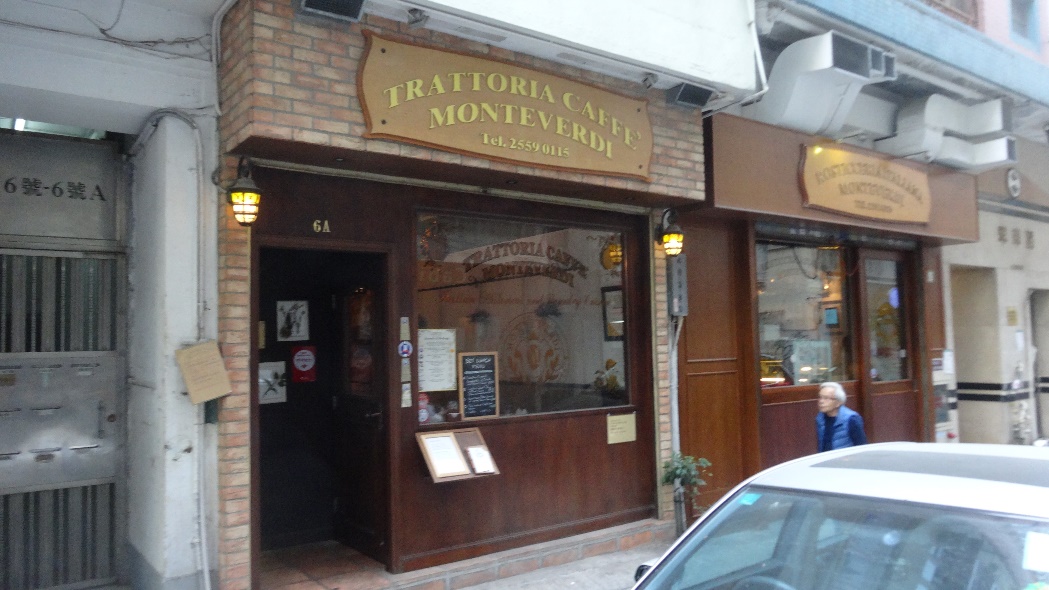
On Terra Madre Day at the Trattoria Monteverdi Restaurant at 6A, High Street, Sai Ying Poon, Hong Kong at 12:45 pm on Sunday, the 9th December 2017, I attended for the careful and well imagined Slow Food repast and dictated my notes for this report to Slow Food Hong Kong.
“High Street” is a long and rather narrow street running parallel with the heart of Des Voeux Road. It is certainly “low” because there is a deep slope down to High Street from the Bonham Road exit of the Sai Ying Pun MTR station but it is also “high” because there is a further strip slope down to Des Voeux Road and the Harbour.
The restaurant has a modest street frontage. And the interior was small and cosy when we entered.
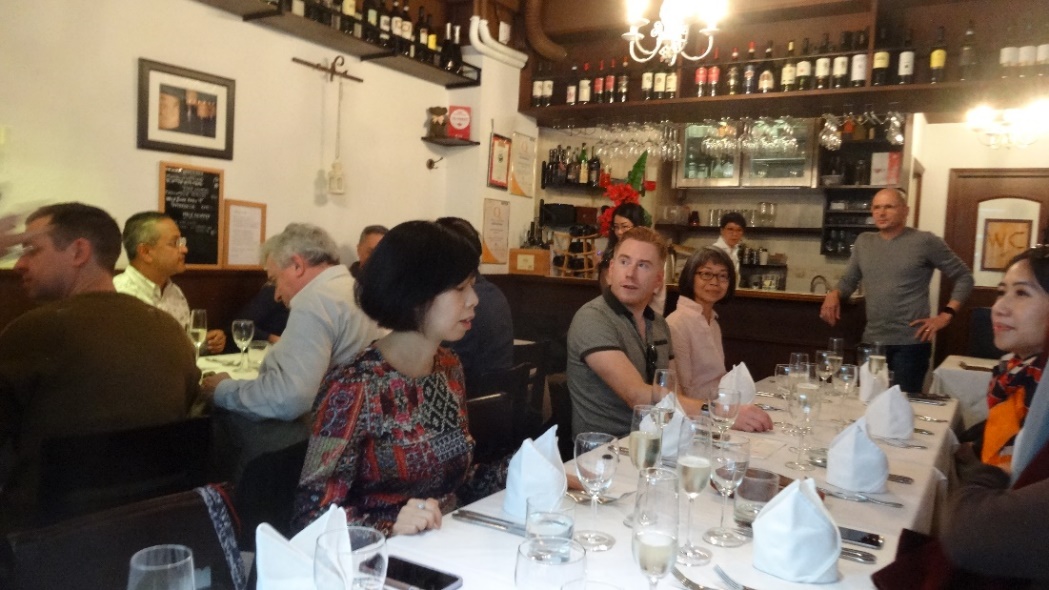
When we entered there were two long tables on each side of the restaurant premises. The rest of the Slow Fooders company who had signed up arrived more or less before 1:00 pm and were comprised of Chinese, Italians, British, Australians and Japanese.
On arrival, everybody was given a glass of Pro Secco by our host, Mr. Armando Osmani and Armando accompanied by his wife Ibe gave a general introduction of the Pro Secco to all listening in.
Armando explained when he opened the restaurant on High Street 5 years ago it was the only restaurant catering to visitors to the street.
Then Armando’s wife Ibe placed paper bag baskets on each table of the cubes of house made bread for us to eat sparingly because of all the food to follow.
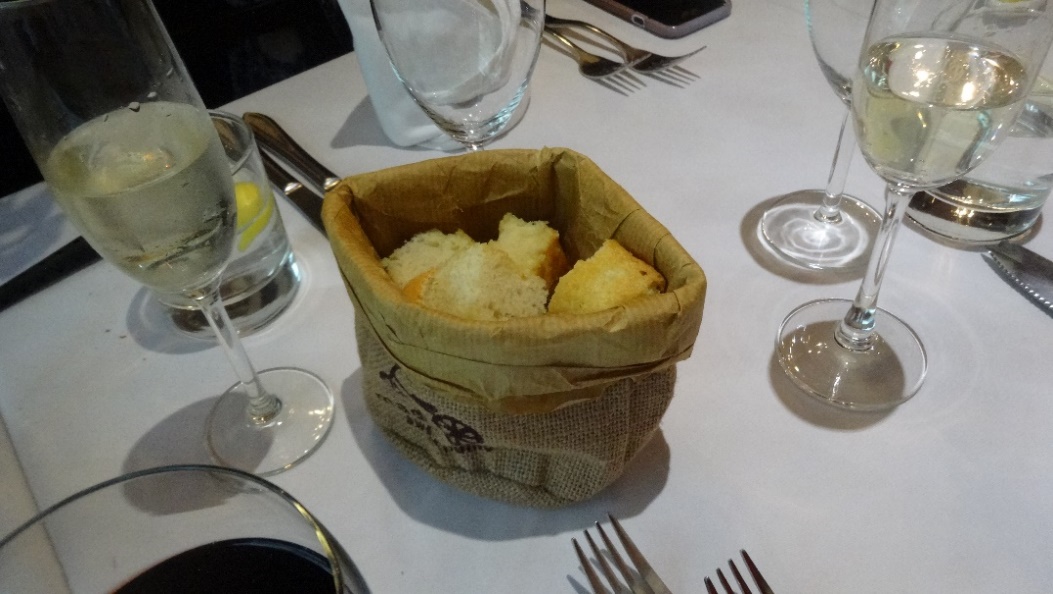
Armando introduced the appetiser, which was Crostini with Ricotta di Bufala Campana DOP and Menaica anchovies.
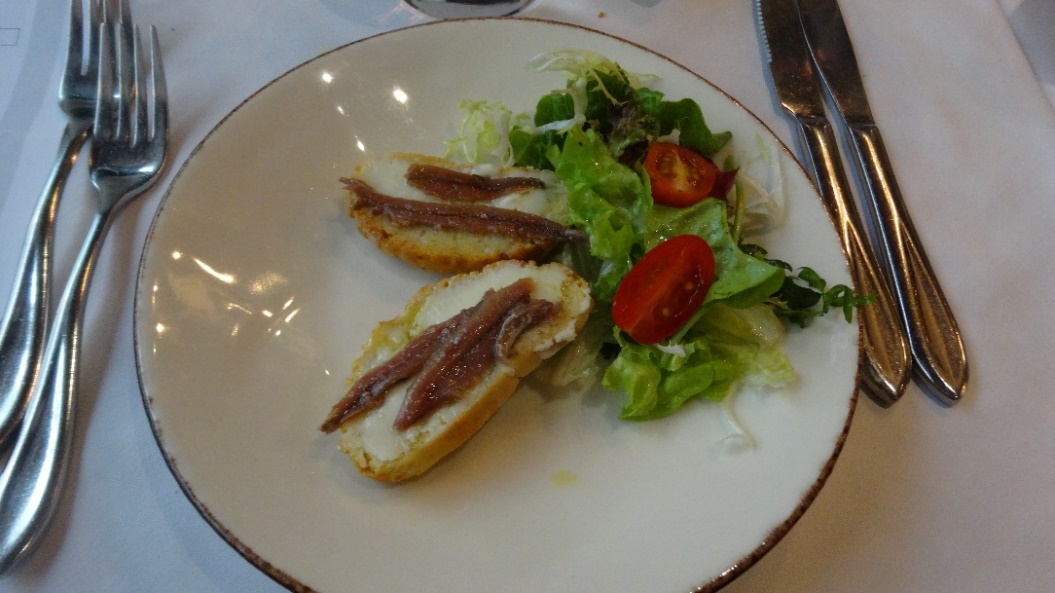
“Menaica” means the Mediterranean fishing net in which the anchovies are caught which has a specific denier of aperture in the net so only the larger anchovies are caught and the smaller ones flash through the holes.
The fishermen pull the anchovy nets into the boat and immediately remove the heads and the tails and layer the anchovies into barrels so there is a layer of Anchovies and then a layer of salt and a layer of anchovies and a layer of salt and so on until the barrel is full.
These full barrels are taken on shore and the contents preserved in olive oil for three months after which they are taken and put into bottles or tins for consumer sale.
Armando introduced the second dish styled in Italy as the “Primo” dish, which was the Pizzoccheri della Valtellina – an Alpine pasta made with Buckwheat and semolina typical of Valtellina in the Lombardy Region of Northern Italy. Armando explained that there are more than a hundred different kinds of wheat in Italy and the highest grows to the height of 1m 80cm and this is not being served today but he has found the source from whom he will try to obtain it in future. This dish is covered with melted Bitto cheese from the same region.
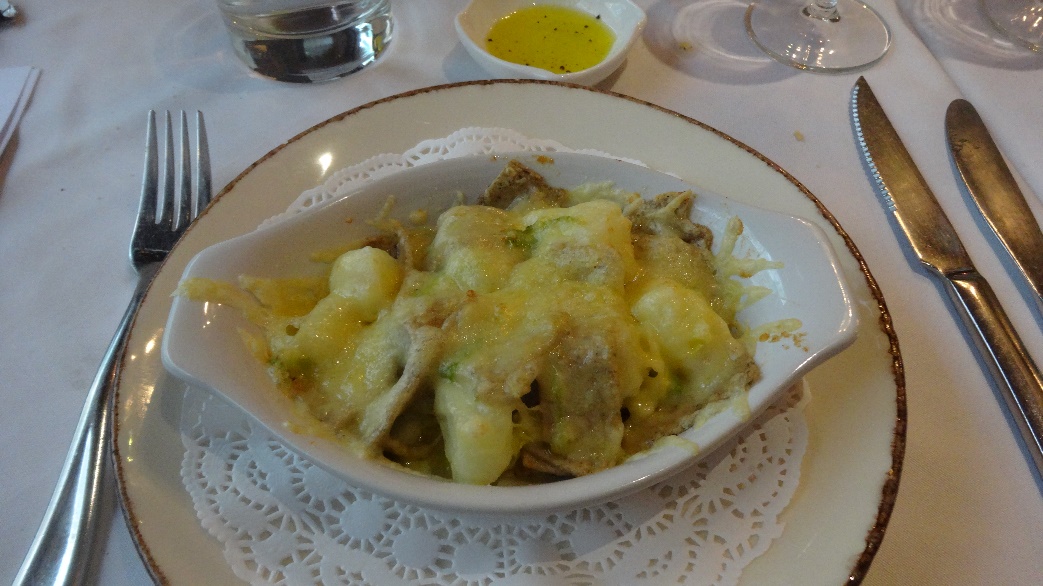
Then Armando explained the different kinds of wheat. The most refined kind is 00 and grading down from 00 to 005. What we were going to have today is 002 and it is hard to find this from Italy because the production is very small and only a small number of farmers will actually grade it down to that level. Because the quantities are very small it is very hard to procure the supplies from Italy. The most important fact is to buy flour with a home wheat grade other than the commercial 00 flour grading.
Armando further confirmed that Semolina is made exclusively from Durum wheat and there are two grades which are the fine grade and the lower grade and the lower grade is the one which we are eating today which is a refined and Durum wheat. Armando also explained the difference between two basic different kinds of pasta. Type 1 is Semolina and water. Type 2 is eggs and water. Armando also explained that in the making of pasta one cannot make fresh pasta every day. It is good to make fresh pasta and then freeze it for 2 or 3 days and then use it.
Then Armando explained the next dish, which was Manzo all’olio – a dish or slow cooked beef from a family recipe in the district of Brescia. This was told to Armando by an Italian resident school teacher in Hong Kong as an expert home-cooked dish favourite of her mother.
The teacher informed Armando of the recipe and the way in which her mother could prepare it.
Eventually, the mother came to Hong Kong and Armando prepared the dish for her to taste. She approved it.
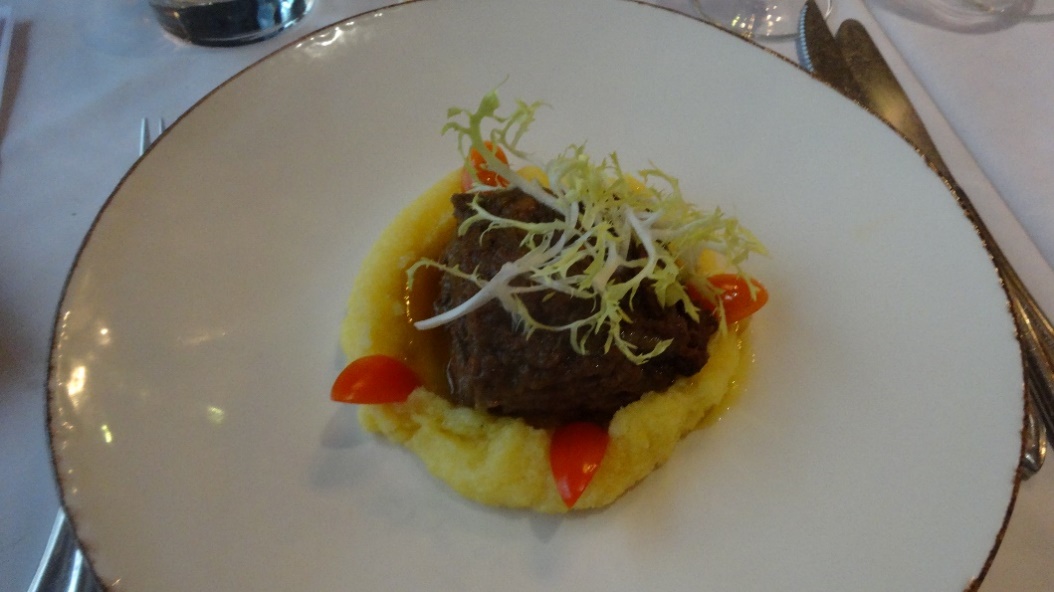
This was followed by the fourth and final dish of the sweet course, which was Struffoli – a Christmas sweet from Naples – served with Neapolitan coffee.
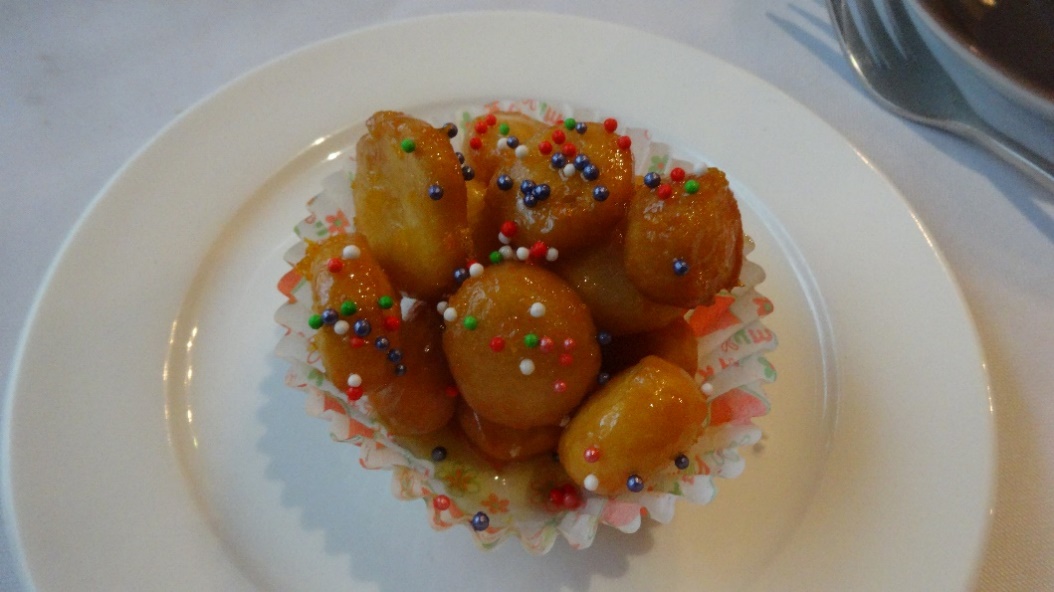
Armando also informed us about the square in the Naples which is by the main theatre and there is a coffee shop called Caffe del Professore where the best coffee in Italy is made and served. The proprietor refuses to allow any export of this coffee to any other provider including Starbucks and Pacific Coffee worldwide. Armando then produced red dessert wine from Italy, which was basically a dessert wine combined with a reduced juice of the cherry fruit. This is a very singular combination for which the cherries are picked and then put into a big bag with sugar and macerated for about three months and then combined with Montepulciano wine as a regular wine. This resulting name of the brand of the cherry dessert wine is Buruscin which had a full round but slight tart flavour which was very acceptable.
With a considerable amount of explaining by Armando and discussion with all members of the attending Salivators the time soon flew by and it was 3:00 pm by when people were able to consider that they were both well and superbly fed. Armando then introduced the chef who had prepared all these dishes under Armando’s direction.
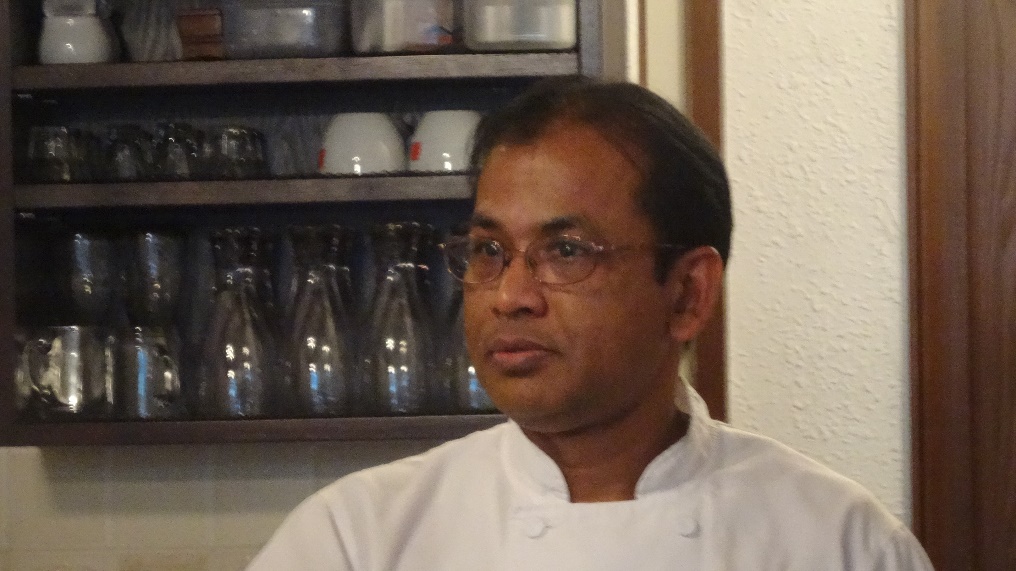
We had all admired the culinary skill with which each dish had been prepared and presented in a very cordon bleu way and we very much impressed with the decorative presentation and, of course, with the delicacy and taste of all of them which well fitted the descriptions that Armando had given.